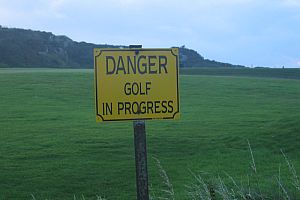Summertime Grilling and Your Health
 For many people, summertime just isn’t summertime without a barbecue! It’s a generations-old cultural phenomenon that combines three things American families love—food, family and fun!
For many people, summertime just isn’t summertime without a barbecue! It’s a generations-old cultural phenomenon that combines three things American families love—food, family and fun!
Unfortunately, though, there are also some potential downsides to grilling when it comes to your health. This article presents a quick overview of the risks and offers some advice to help make grilling a little bit safer for you and your family this summer.
What’s unhealthy about grilling?
The first issue has to do with HOW the food is actually cooked. Grilling meat or fish over high heat produces carcinogens known as heterocyclic amines (HCAs), which have been linked to increased risk of various cancers. The second issue has to do with WHAT KINDS of food many people choose to grill. Many of the most popular foods for grilling can be high in fat and sodium and have little other nutritional value. With these two issues in mind, here are some tips on how you can enjoy healthier grilling all summer long.
Clean the grill. You don’t want to incorporate rancid grease and the charred buildup from previous barbecues into your meat before you’ve even begun cooking it. Use a sturdy wire scrub brush and warm soapy water to scrape any residue from the grill’s surface, both before and after you grill. This will also greatly improve the flavor of your food!
Use a low flame and cook briefly. When direct flames touch the meat it can add to the HCAs produced. To reduce these HCAs, keep the gas flame low or, if you’re using charcoal, wait until the coals have been reduced to glowing embers. The heat will still be sufficient, but will not be as likely to char the meat. Try not to overcook your food, as overdone meat has more HCAs. Discard any charred parts.
Flip burgers often. To reduce the chances of E. coli contamination in your ground beef, be sure to flip your burgers every 30 seconds or so. The USDA advises that you cook burgers to an internal temperature of at least 160°F to kill any possible bacteria. However, if you are someone who thinks that a burger cooked beyond medium-rare is a travesty, buy a cut of beef and grind it yourself and form your patties just before grilling. Or, if it is commercially prepared, be sure to flip your burgers often. A study found that when two burgers were cooked to the same temperature, the one flipped more often had a fifth of the E. coli.
Pre-treat your meat. To allow you to cook your meat for a shorter time while still retaining flavor and tenderness, consider marinating it first. A marinade will tenderize the meat, and by using some flavorful spices in the marinade or in a dry rub, you can add a host of antioxidants to your meal that will reduce the production of HCAs. Researchers from Kansas State University found that marinating meat reduced carcinogens by 57 to 88 percent. Red wine, ginger, turmeric, rosemary and garlic are among the great-tasting, cancer-fighting ingredients you can include in a marinade. And by combining two parts onion, two parts garlic and one part lemon juice in your marinade, you can reduce HCAs by 70%, as some researchers in Germany have found.
Choose healthier meat. Grass-fed organic meat is a far healthier choice than conventionally raised meat. Compared with conventionally raised meat, organic grass-fed beef and chicken are lower in saturated fat and cholesterol and higher in omega-3 and CLA (conjugated linoleic acid), which has been shown to reduce cholesterol and abdominal fat. It is also free from hormones and antibiotics.
Go veggie. Though meat is certainly tasty, grilled vegetables are delicious too, and vegetarian versions of burgers and hot dogs have come a long way from their early roots, when they had all the flavor of foam peanuts or confetti. Fortunately, there are now a host of excellent veggie “meats” on the market that don’t force you to sacrifice good taste for good health. And there’s nothing quite like grilled red peppers, tomatoes, asparagus, mushrooms, zucchini and onions. A good way to grill veggies is to cut them up into small chunks and put them on skewers. You’ll get a healthy serving of vitamins, minerals and antioxidants in each bite. And topping your burger with some slices of avocado will give it a nutrition boost as well as a taste boost. Its mono and polyunsaturated fats have been shown to reduce cholesterol and can be a good substitute for mayonnaise.



 America’s roads have become far safer across the past three decades. By just about any measure, travelers are much less likely to be injured or killed in a motor vehicle accident than they were in the late 1980s and early 1990s. And this is true even though we’re driving more miles each year!
America’s roads have become far safer across the past three decades. By just about any measure, travelers are much less likely to be injured or killed in a motor vehicle accident than they were in the late 1980s and early 1990s. And this is true even though we’re driving more miles each year!



 Headaches are one of the most common types of pain that people experience on a regular basis. Researchers estimate that nine out of ten Americans suffer from headache pain at some point. 95% of women and 90% of men have had at least one in the past 12 months. And for about 45 million of us, those headaches are chronic.
Headaches are one of the most common types of pain that people experience on a regular basis. Researchers estimate that nine out of ten Americans suffer from headache pain at some point. 95% of women and 90% of men have had at least one in the past 12 months. And for about 45 million of us, those headaches are chronic.